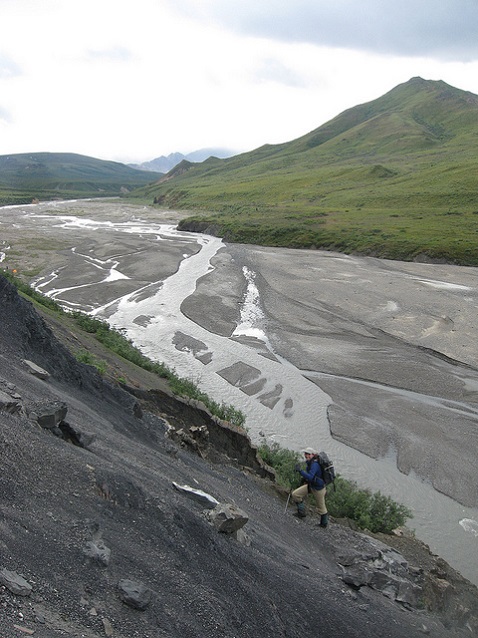
NPSphoto/Lisa Merkhofer
Braided streams and rivers have multi-threaded channels that branch and merge to create the characteristic braided pattern. Braided channels are highly dynamic with mid-channel bars which are formed, consumed, and re-formed continuously.
The development of braided channels is favored by several factors. The most important factors leading to their development are large bed load and readily erodible bank material, which enable channel shifts to occur with relative ease. Once formed, bars in braided channels can become vegetated and thereby stabilized as islands. However, highly variable discharge is also typical of many braided rivers. These large fluctuations in discharge promote alternating channel degradation and aggradation which can suppress the establishment of vegetation on braided channel bars (Summerfield, 1991).
As discharge declines after a flood, the coarse bed load is the first to be deposited in the channel. This material forms the nucleus of bars that grow downstream as the flow velocity is reduced and finer sediment accumulates. With further decreases in discharge the water level progressively falls and the bars are gradually exposed. During subsequent floods, some or all of the bars in a braided channel may be submerged depending on the discharge attained. During large floods braided channels can experience major diversions of flow (Summerfield, 1991).
Relataed Links
Last updated: April 22, 2020
